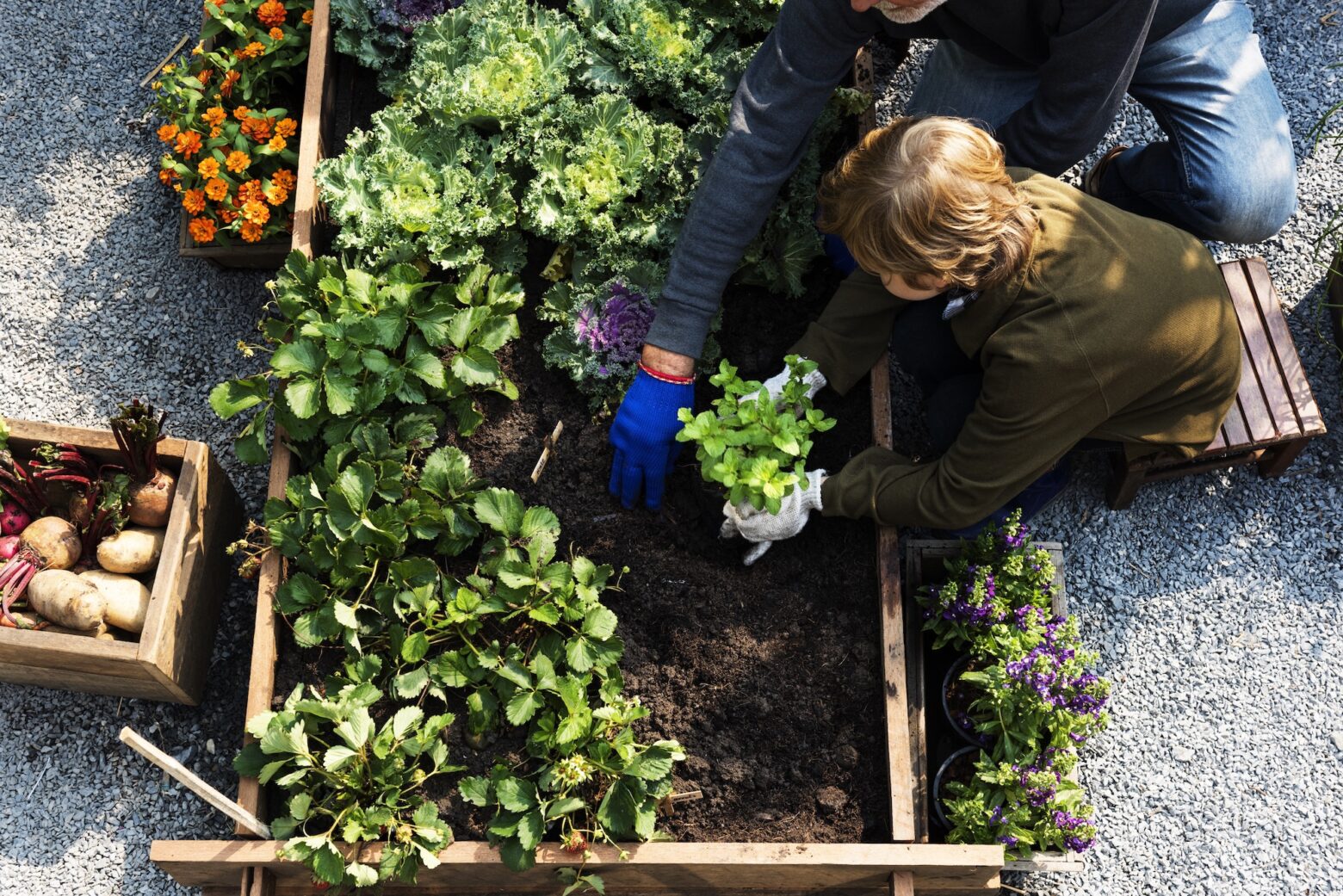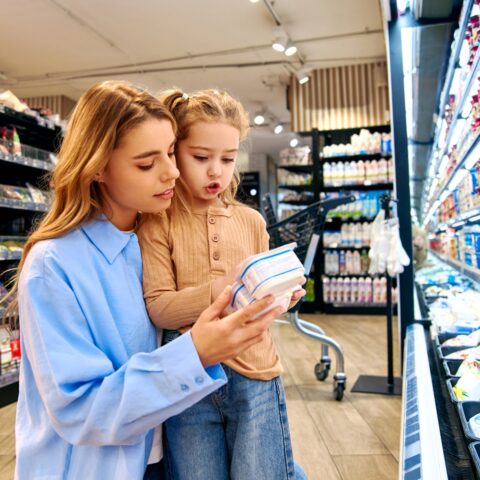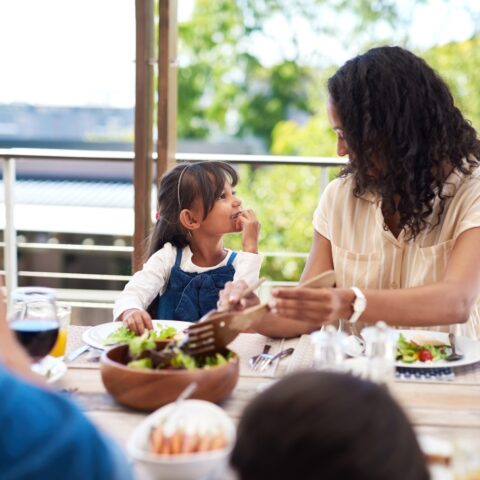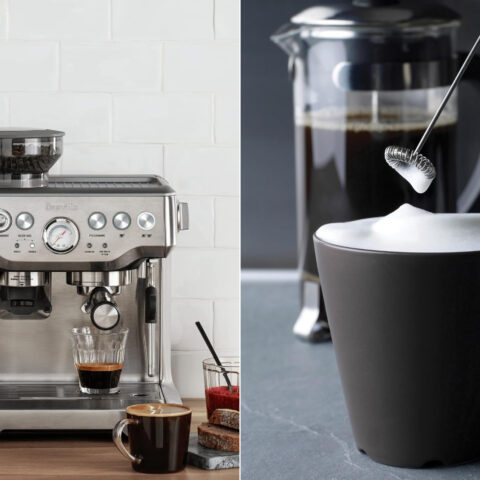Grow Your Own Food with These 5 Home Garden Tips

During World War II, the United States promoted the idea of “victory gardens.” They were fruit and vegetable gardens meant to be grown at your own home, or a local park, to supplement rations and boost morale.
Today, as we’re faced with our own public health crisis and concurrent climate crisis, growing a victory garden of your own might be a good idea.
This is especially true when you consider the environmental impacts of conventional farming, which aggravate greenhouse gas emissions and expose us to serious levels of potentially harmful pesticides and synthetic fertilizers.
Growing your own fruits and vegetables is an excellent way to reduce your carbon footprint, reduce your exposure to pesticides and fertilizers, reduce your food waste, and ensure you have access to a delicious array of vibrant produce all the time.
Keep reading to learn about how growing your own food benefits the environment, and tips for building your own garden, no matter where you live.
How growing your own food benefits the environment
1. You’ll reduce your carbon footprint and waste.
Your carbon footprint is your total greenhouse gas emissions—those gases that trap heat in the atmosphere, “thickening the earth’s blanket” and warming it to untenable temperatures. [1]
Unfortunately, the food you eat contributes to this footprint. This is because there’s a massive energy cost behind food production and transport. It’s estimated that food in the United States travels an average total of 1,500 miles to get from farm to plate. This long-distance transport of food also puts an estimated “10 kcal of fossil fuel energy into our food system for every 1 kcal of energy we get as food.” [2]
More than that, our means of food transport, like airfreight, generates lots of carbon dioxide emissions. [2]
So, the food you purchase at the grocery store comes with a big hit to your carbon footprint. That’s not even considering the fact that in America, we waste much of that food. In fact, a whopping 30 to 40 percent of our food goes to waste. [3]
By growing your own food, even just a little bit, you’ll drastically reduce your emissions output, and likely the amount of food you waste.
2. You cut out potentially harmful pesticides and fertilizers.
Conventionally grown food is treated heavily with pesticides and synthetic fertilizers. More than 1.1 billion pounds of pesticides are applied annually to crops in the United States. [4] Many of these have been linked to life-threatening illnesses, like neurological disease, birth defects, and cancer. [5]
You might be familiar with glyphosate, better known as RoundUp, and how the World Health Organization classed it “probably carcinogenic” in 2015. The Environmental Protection Agency has yet to make the same claim, dubbing it unlikely to be a carcinogen. Still, several recent court cases have found RoundUp’s parent company, Monsanto, liable for life-threatening illnesses attributed to the pesticide. [5]
While RoundUp may be the most well-known, there are many other pesticides and fertilizers that have culminated in what FoodPrint dubs a “public health hazard.” [5]
By growing your own food, you control what you use to treat your produce. There are plenty of safe, nourishing ways to fertilize soil—like with compost—that won’t expose you to harmful products.
Five tips for growing your own food
1. Start an indoor garden.
Short on space? You can still enjoy the benefits of growing your own food with a small indoor garden. Herbs, greens, scallions, and peppers are all easy to grow indoors, and they come with the added perk of a more controlled environment. Since you’re supplying the soil, fertilizer, and light sources, there are fewer variables to worry about.
If you have a small patio or balcony, you can also maximize vertical space with hanging baskets or a trellis garden.
2. Plan ahead for natural seasons.
If you’ve got the outdoor space to work with, it’s an excellent idea to plant ahead. (See what we did there?) Most fruits and veggies have a natural season, or the time that they’ll grow to their juiciest and tastiest. You’ll want to get a calendar and plan out the best time to plant these fruits and veggies, taking into account their typical growth periods. Here’s a handy planting schedule you can customize for your region.
3. Know your soil and enrich it appropriately.
Not all soil is the same. Go outside and pinch a bit of your dirt, and you’ll get an idea if it tends more toward clay, sand, or loam. This is the soil texture that will help determine what you can grow, and how to treat it best. [6] For example, you can easily plant carrots and onions in clay. If you’d prefer to plant something like strawberries, you may want to build raised beds and use topsoil.
As for soil enrichment, compost is an excellent choice. There are organic fertilizer options, too.
4. Plant a mix of things.
In the United States, conventional farms tend toward monocropping. This means they plant vast swaths of one thing, and one thing only. In your own garden, you can opt for biodiversity. Keep things exciting and plant a few different complementary veggies and fruits. You’ll learn so much more, and have an even better harvest to enjoy.
5. Novice planter? Start with “plug plants.”
If you’re new to gardening, don’t be afraid to purchase “plug plants,” meaning they’re already partially grown and ready to be transplanted into the ground or a container. You can work your way up to growing bulbs and seeds directly in the ground, or more delicate varieties in seed trays.
Congrats, you’ve grown some delicious foods. Here’s how to use them.
Is it time to harvest some of those beautiful new fruits and vegetables? Here’s a few ideas for using them up:
- Cook up carrots in this fragrant carrot lemongrass soup.
- Put a medley of fresh-picked berries to use in this mixed berries with whipped coconut cream.
- Use up a multitude of veggies in this aptly-named garden harvest salad.
- Make pomegranate raspberry recovery gummies with fresh-harvested raspberries.
- Pair vibrant cucumbers and grape tomatoes in this cucumber tomato salad.
- Enjoy velvety smooth cauliflower with this creamy mashed cauliflower recipe.
References
- Overview of Greenhouse Gases [Internet]. EPA. Environmental Protection Agency; 2020 [cited 2021Feb11]. Available from: https://www.epa.gov/ghgemissions/overview-greenhouse-gases
- How Far Does Your Food Travel to Get to Your Plate? [Internet]. CUESA. 2018 [cited 2021Feb11]. Available from: https://cuesa.org/learn/how-far-does-your-food-travel-get-your-plate
- Food Waste FAQs [Internet]. USDA. [cited 2021Feb11]. Available from: https://www.usda.gov/foodwaste/faqs
- Pesticides Industry Sales and Usage 2008 – 2012 Market Estimates [Internet]. EPA. Environmental Protection Agency; 2017 [cited 2021Feb11]. Available from: https://www.epa.gov/pesticides/pesticides-industry-sales-and-usage-2008-2012-market-estimates
- Pesticides in Our Food System [Internet]. FoodPrint. 2021 [cited 2021Feb11]. Available from: https://foodprint.org/issues/pesticides/?cid=263
- Sand? Clay? Loam? What Type of Soil Do You Have?: Gardener’s Supply [Internet]. Garden Tools, Planters, Raised Garden Beds +More | Gardener’s Supply. [cited 2021Feb11]. Available from: https://www.gardeners.com/how-to/what-type-of-soil-do-you-have/9120.html
Courtney Hamilton
Courtney Hamilton is a writer and editor with over nine years of experience.
More About The Author




